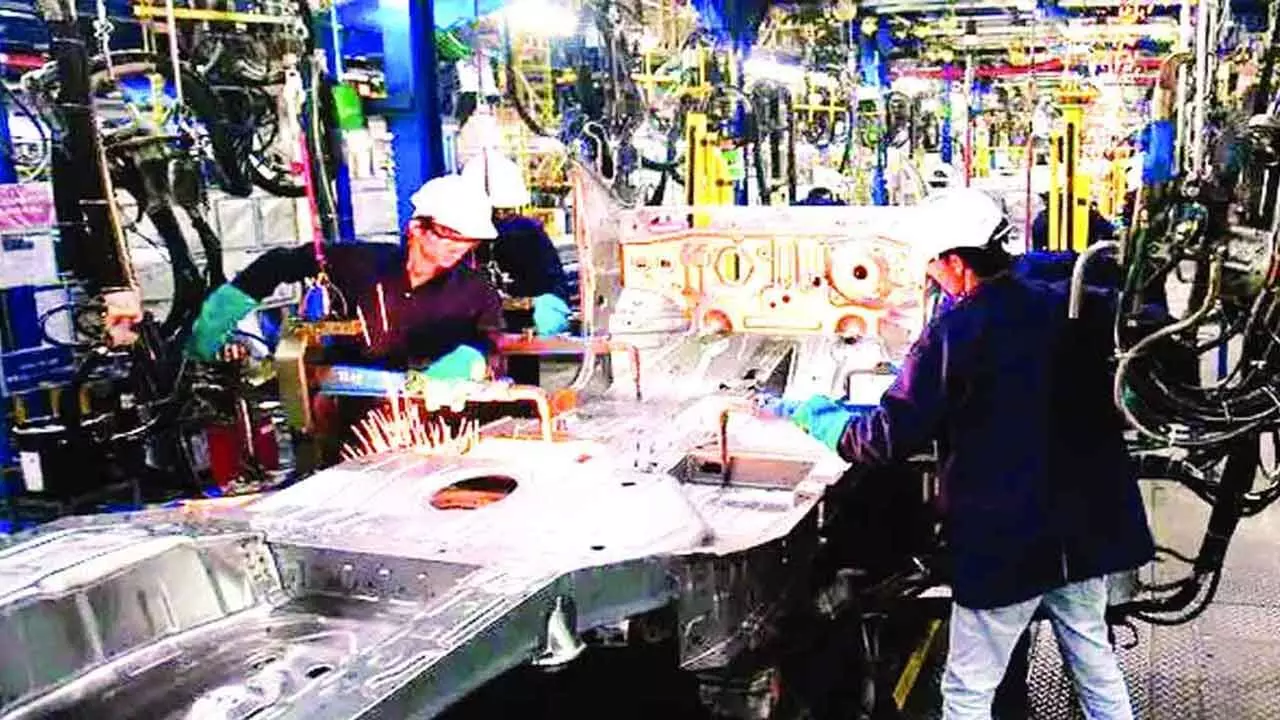Mfg. Sector Needs Structural Reforms, Not Ad Hoc Policy Announcements
Mfg. Sector Needs Structural Reforms, Not Ad Hoc Policy Announcements

That manufacturing is the Achilles’ heel of the Indian economy is commonplace but, of late, this heel has begun hurting more. According to data from the Centre for Monitoring Indian Economy (CMIE), their contribution in exports has been reducing since 2012-12, indicating the decreasing competitiveness of our merchandise in global markets. Exports comprised over 18 per cent of manufacturing sales in 2012-13. It was down to 6.8 per cent in 2022-23 and stands at 1.8 per cent till date this fiscal, according to CMIE calculations based on a study of 961 listed and unlisted companies. “Companies declare foreign exchange earnings as part of their financials. The numbers look at the export figures from these disclosures relative to total sales. The data here considers only those firms which have both forex earnings as well as sales numbers,” a news report said. This aligns with the World Bank’s September 2024 India Development Update, which highlights about the country’s lost ground on manufacturing segments like apparel and footwear. Meanwhile, there is some discrepancy in the figures about the contribution of manufacturing to the gross domestic product (GDP) that the government and others provided with the former maintaining that the contribution is at 17 per cent.
According to the World Bank, however, it was 13 per cent in 2023; Statista, the global data and business intelligence platform, says it was 13 per cent in 2022, down from 17 per cent 2010. Even if the government’s data is accepted as accurate, there is no denying that there is a serious problem with the industrial sector. Approximately, 13 years back, the then UPA government at the Centre announced a ‘National Manufacturing Policy’, whose objective to ensure that the industrial sector would contribute to 25 per cent of GDP by 2022. It is a different matter altogether that it has not happened even once. Even other datasets point out the extent that the sector is languishing. As per the latest international trade data released by the government, merchandise exports declined 9.3 per cent to $34.7 billion in August. Commerce Secretary Sunil Barthwal’s response was “In the current global situation, exports have been a huge challenge… there is a slowdown in China, and recession is persisting in Europe and the US. Transportation cost because of trade routes getting diverted from Suez Canal to Cape of Good Hope is an issue that is persisting.”
He has a point but the factors responsible for the inadequacies of Indian manufacturing are deep-rooted and chronic rather than episodic. A Bloomberg report says that the country’s share in global exports of apparel, leather, textiles, and footwear declined from 4.5 per cent in 2013 to 3.5 per cent in 2022. In contrast, Bangladesh’s share in global exports of these goods reached 5.1 per cent, while Vietnam’s stood at 5.9 per cent in 2022. It is suffice to contend that the problems plaguing Indian manufacturing are structural; occasional policy interventions like reduction in corporate tax rates and production-linked incentive schemes will not help much; drastic change is needed, which means structural reforms. Our policy and decision makers must realize that adhocism will do no good to the industrial sector.

